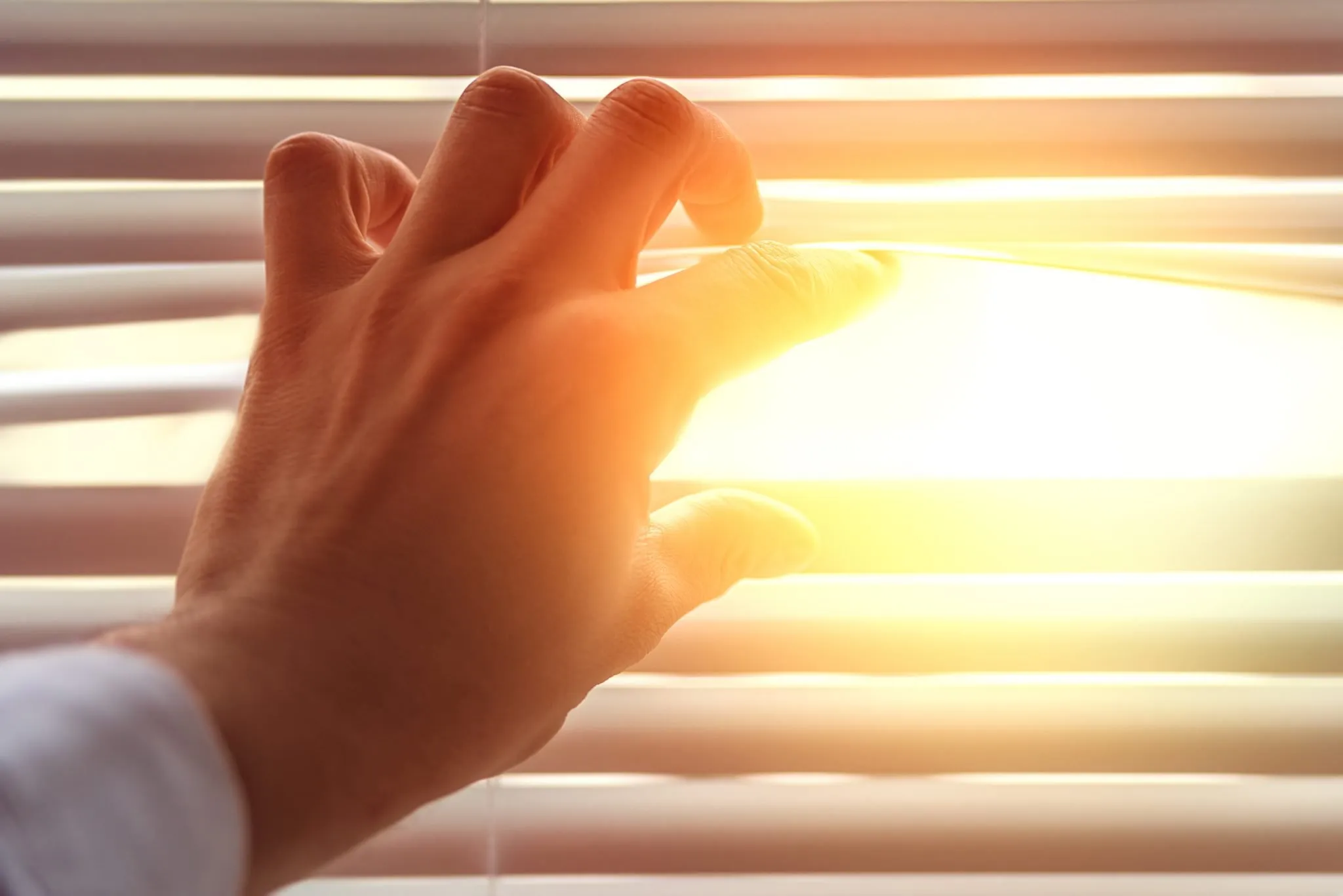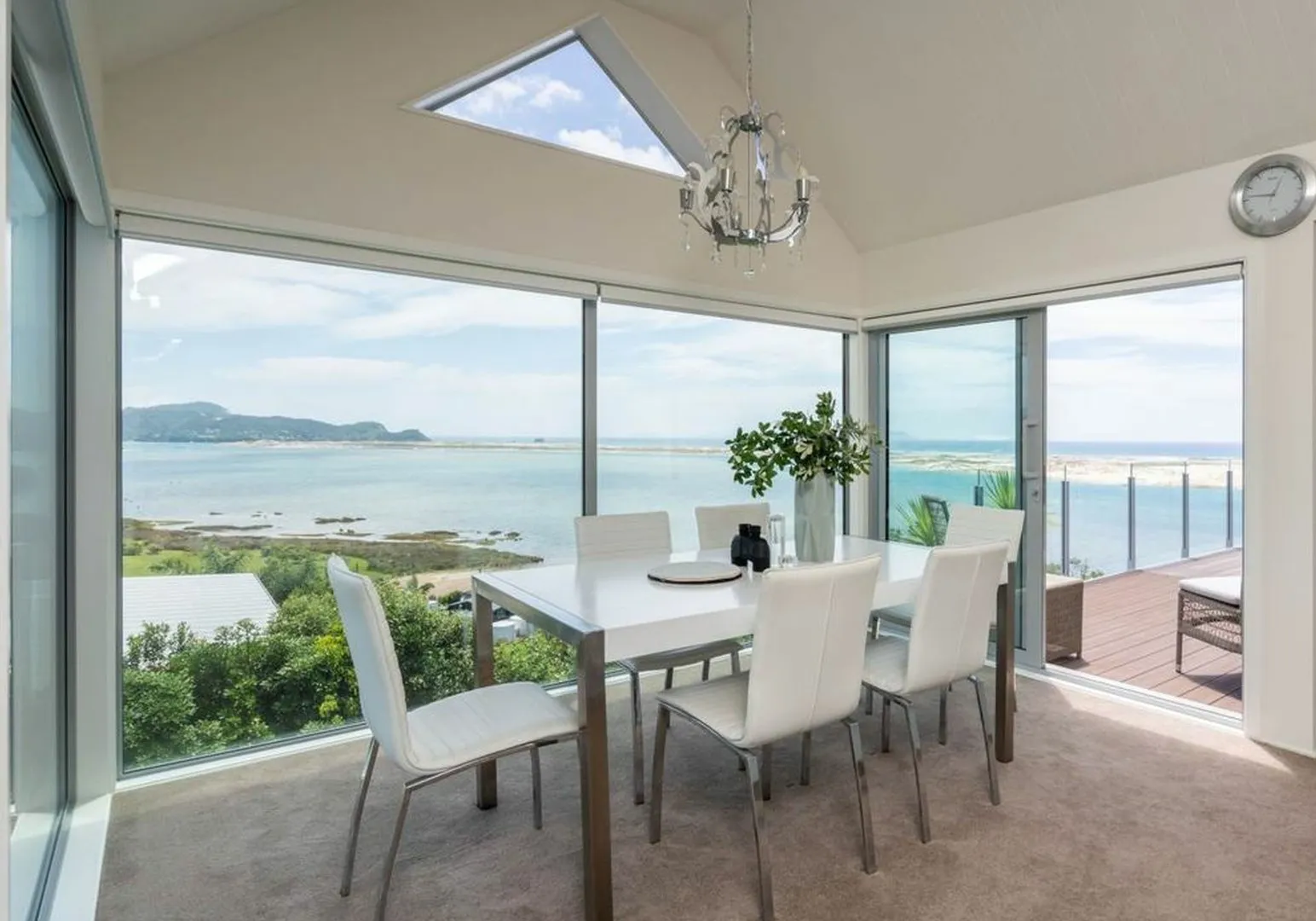Understanding how the sun affects the comfort inside your home is important when selecting your double glazing.
The Sun provides free daylight and warmth. Utilising this well can lead to a light and comfortable home that costs less to run. However, using this poorly can lead to an uncomfortable, costly, home environment. New Zealand is in the Southern Hemisphere, so the north-facing side of the house receives the most direct sunlight throughout the day. When designing a house, one of the key considerations is the placement of the building to capture the optimal level of light and warmth from the Sun.

But what if you’re not building? What if you’re wanting to upgrade an existing home to provide you with warmer winters and cooler summers? Understanding the positioning of your home and the effect that the heat gain from the Sun will have inside is important in helping you choose the right double glazing for your windows.
The Sun's path.
The Sun’s daily path in the Southern Hemisphere moves from east to west, with an increasing altitude angle from sunrise to noon, then a decreasing altitude angle through to sunset. Two things about this change throughout the year:
- The solar altitude angle at (solar) noon – this is greatest (i.e., the Sun is highest) at summer solstice (20 December) and lowest at winter solstice (21 June).
- The solar azimuth angle at sunrise and sunset – the sun rises from the south-east and sets to the south-west in summer. In winter, it rises from the north-east and sets to the north-west.
Double Glazing 101Questions & Answers
Understanding the path of the Sun helps in identifying the areas of the house that receive direct sunlight and the angles at which it enters, for the different times of the year. Problems such as overheating and glare due to high levels of sunlight entering through increasingly larger and often floor-to-ceiling windows, are an escalating concern in New Zealand homes.
Once you appreciate the impact the sun has on the heating or cooling of your home, you’ll be better positioned to choose the right glass for the needs of your home.
North side.
The north side of the house receives the most sunlight during the day, particularly in the mid-morning to mid-afternoon period. If your home has large windows or glass doors on its northern side, you will capture more solar heat. This may be ideal in winter but could leave your home overheating during the summer.
Shading devices or overhangs, such as sufficiently wide eaves, will help to reduce the impact of this solar energy entering your home in summer.

Well-designed eaves on the northern side of a house can be used to provide shading from the Sun in summer and allow sunlight in during winter. Other shading options that could provide this benefit are deciduous trees (those that lose their leaves in winter) or well-positioned shade sails. In contrast, non-deciduous trees to the north or poorly positioned shade sails could result in you missing out on solar energy in winter when you need it most.
Selecting from the SuperTherm™ double glazing range.
If you have a large proportion of glass on the north side without summer shading:
Choosing SuperTherm Cool will reduce the amount of solar heat gain you experience through your north-facing windows, keeping you cooler in summer, without compromising on natural light. A high proportion (approx. 66%) of the solar heat energy from the Sun is kept out, keeping the interior of your home at a more comfortable temperature.
If you have good summer shading or have a small proportion of glass on the north side:
Choosing SuperTherm Warm will allow a high level of solar warmth into your home in winter through your north-facing windows, providing free energy from the Sun in winter without overheating in summer.
East side.
The east-facing side of the house receives direct sunlight in the morning, albeit very little in winter and a significant amount in summer. While this may be beneficial for warming up the house naturally during the cooler seasons, it can cause your home to be uncomfortably hot in the mornings over summer. Glare can also be a major concern as the sun begins to rise higher.
Selecting from the SuperTherm™ double glazing range.
For homes where positioning means very little sun comes through in the mornings, SuperTherm Warm™ will help to keep your home warmer all day, by allowing in a higher level of solar heat energy and keeping it, and the warmth generated inside your home, inside.
For homes with a larger proportion of glass on the east face, SuperTherm Cool™ will help to reduce the amount of solar heat gain, with approx. 66% of the heat energy from the Sun being kept out, whilst keeping the warmth generated inside your home, inside. Since the largest impact from the Sun to the east is in the warmer months of the year, the preferred option from the SuperTherm range will generally be SuperTherm Cool.
West side.
The west side of the house experiences direct sunlight in the afternoon and early evening, depending on the time of year. In winter, with the Sun setting to the north-west, very little sunlight lands on the west face. In summer, with the Sun setting to the south-west, sunlight can be on the west face from mid-afternoon until early evening. This can result in significant heat gain leading to overheating and uncomfortable evenings.
It is important to note that traditional eaves will not provide a material benefit on the west (or east) side of the home. This is since the altitude angle of the Sun is low at the time of day that the Sun is shining into this side of the home. To minimize solar heat gain on the west side, it is advisable to have smaller windows or use external shading devices, or trees etc., to block the intense afternoon sun.
Selecting from the SuperTherm™ double glazing range.
For homes with a reasonable proportion of glass on the west face, SuperTherm Cool™ will help to reduce the amount of solar heat gain, with approx. 66% of the heat energy from the Sun being kept out, whilst keeping the warmth generated inside your home, inside. For homes with a small proportion of glass, or with suitable external shading in summer, SuperTherm Warm may be preferable.
Since the largest impact from the Sun to the west face is in the warmer months of the year, and overheating can lead to uncomfortable summer evenings, the preferred option from the SuperTherm range will generally be SuperTherm Cool.
Other considerations.
Cross ventilation is an important part of home design and can play a key contribution to cooling in summer months. That is, having windows that can be opened to create a ventilation path from one side of your home to the other can be very beneficial. As part of a retrofit double glazing or window replacement project, you may be able to change the layout of your windows and add more opening windows to increase ventilation and airflow into your living area, increasing the level of comfort inside.
South side.
The south side of the house receives the least direct sunlight. It tends to remain relatively cooler, making it suitable for rooms where you want to minimise heat gain, such as bedrooms or storage areas.
Selecting from the SuperTherm™ double glazing range.
The general focus for south-facing windows will likely be on maximising daylight and thermal insulation. In this case SuperTherm Warm would likely be the preferred option.
If the south-facing room has a larger proportion of glazing and has an orientation that includes the west (e.g., south-west facing), then overheating may be a consideration. This could mean that SuperTherm Cool is the preferable option.
Conclusion.
By selecting the right glass option based on the position of your house in relation to the rising and setting of the sun through the seasons, you will be able to optimise solar heat gain and improve energy efficiency.
Consider the usage of the rooms – do people spend a lot of awake time in these rooms? Is health an issue with bedrooms needing to be kept warmer? Or do you prefer a cool bedroom?
Understand how vegetation, eaves, and other shading materials around your home affect the amount of solar heat gain you experience. Are you happy with the shading provided and how does this affect the heating and cooling requirements inside your home? If you had significantly better insulating glass, could your requirements for shading change?
Do you need to improve the level of cross-ventilation in your home? Changing the layout of your windows may be an important consideration for you to increase the comfort levels inside your home.
Choosing the right SuperTherm™ option can work with the existing shading features of your home to provide you with a home that is warmer in winter and cooler in summer.



